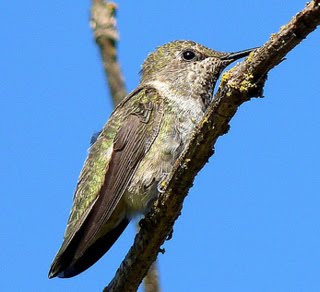Common Sandpiper. Pete Woodruff.
I think there's always the likelihood that pics find their way back on to Birds2blog having been here before and this one of the Common Sandpiper is such a candidate. It was taken in the Forest of Bowland this summer and is a pleasant reminder of possibly four pairs found up here this year between Marshaw and Trough Bridge a couple of miles upstream with two pairs eventually seen with young.
We will be into August tomorrow and for more than five weeks now the Common Sandpiper has been recorded in good numbers at Conder Green which is the best location in the recording area for autumn passage birds and - since three seen on 24 June - the maximum count has been nineteen on 9 July , it is also worth noting that a bird has wintered here for the past two years which is an additional location to the already recorded sites for wintering Common Sandpipers in Lancashire. Interestingly before the established two winter records at Conder Green, I found one here on 1 November 1998 but not again after this date that winter.
I've found ringed individuals at Conder Green in previous years and this year another one was seen and I have noted the results of reading them in my post on 27 July 'Bits of Interest' just five days after finding the bird for which I thanked the three people who supplied me with the information.
In 1997-2000 the Lancashire Atlas estimated c.250 breeding pairs concentrated on the River's Lune and Ribble, and also in Bowland as I have already mentioned. The species suffered a 24% national decline between 1970-2001, whether this was due to changes in the quality of breeding areas or problems in their wintering area is not known, but sadly I have to say human disturbance was attributed to the decline in some of their breeding areas.
Outside our recording area the best location for autumn birds is in the Shard Bridge/Skippol Creek area of the Wyre Estuary with a peak count of 67 birds in July 2003. Good inland sites in autumn include Arkholme on the River Lune where 63 were counted along a little more than five mile length on the early date of 8 June 1996.
The two earliest spring birds on record are coincidentally both on the same date of 21 March in 1933 and 1966, but an even earlier one was that of a bird on 5 March, but this was presumed to have been an individual which had wintered.
One or two notes of ringing interest are of three Lancashire recoveries all in late summer, of birds ringed in the Scottish borders in June/July, and also of one from Northhumberland which had been ringed in June. This apparently supports the south or south westerly movement in autumn proposed by BWP. The only long-distance recovery is of a local breeder which was ringed on 17 June 1968 and was found in Morocco almost seven years later on 18 April 1975.
It remains to be seen whether or not a Common Sandpiper chooses to winter for a third consecutive year at Conder Green but I must admit, watching last years bird feeding one day in the midst of the 'ice age' we experienced and with the banks of the River Conder white with ice was a little weird to say the least.






































